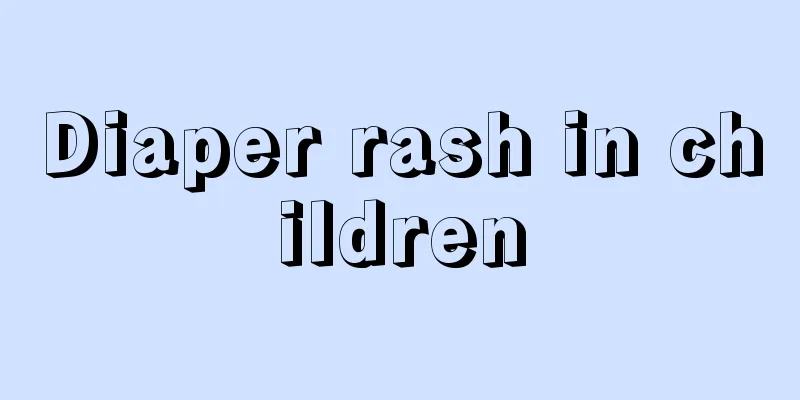Is there still a dent after the rear fascia is closed?

|
Everyone knows that when the baby grows to a certain stage, the fontanelle needs to close. However, for some babies, the posterior fontanelle is closed and there is still a sunken fontanelle. In fact, parents generally do not need to worry too much. It is normal for the fontanelle to be a little sunken when it first starts to close, but most of them will slowly close after three months. The front and back closure will be when the baby is about one year old. It is best not to touch it with your hands.
In a very small number of babies, due to maternal infection during embryogenesis or other diseases, the brain is poorly developed and the head is small. The head circumference is small at birth, and the anterior fontanelle closes prematurely 5 to 6 months after birth, causing microcephaly. For a few babies, when they are 5 to 6 months old, the fontanelle is only the size of a fingertip and seems to be about to close, but in fact it has not ossified. This is not premature closure. As long as the head circumference is normal, not less than 46 cm at one year old and not less than 47 to 48 cm at two years old, it is normal and there is no need to worry.
Under normal circumstances, the posterior fontanelle is very small or closed when the baby is born, only large enough to accommodate a fingertip, and closes at the latest 6 to 8 weeks after birth. The oblique diameter of the anterior fontanelle is approximately 1.5 to 2.5 cm at birth. After birth, as the head develops, the head circumference gradually increases and the anterior fontanelle also increases. Six months after birth, the skull gradually becomes smaller as it ossifies and usually closes between one and a half years old. Babies grow very rapidly during infancy, and their bone development requires vitamin D and calcium. If they are not supplemented in time, they are prone to rickets. The anterior fontanelle of babies suffering from this disease still fails to close 18 months after birth. In a few babies, delayed closure of the anterior fontanelle is caused by hydrocephalus or other reasons leading to increased intracranial pressure, and they should go to the hospital for further examination. Now everyone knows what to do if the baby's fontanelle closes prematurely. If the baby's closure time is within a reasonable range, parents do not need to worry too much, as this is a normal phenomenon. However, this requires parents to remember the normal closure time of the fontanelle so as to avoid mistakes and avoid the baby's fontanelle closure being abnormal without their knowledge.
The fontanelle on the top of infants' heads usually closes within 12-18 months after birth. It is an important window for observing the baby's brain development. However, before the fontanelle closes, this place is very fragile, so the fontanelle must be well maintained to protect the baby's brain from external damage, grow and develop normally, and gradually grow up to be a smart and excellent baby. 1. The most direct and effective tool to protect the fontanelle is hair. In some places, the custom is to shave the baby's head, but still leave a tuft of hair at the fontanelle. This spatula head is not only for shaping, but more importantly for protecting the fontanelle. 2. The baby's fontanelle also needs to be maintained and cleaned, otherwise it is easy for dust and dirt to accumulate, which may lead to seborrheic eczema, commonly known as milk eczema, which can easily allow certain pathogenic microorganisms to parasitize and cause scalp infection in the baby. Severe cases may even cause diseases such as meningitis and encephalitis. 3. The fontanelle is very important. You must be careful not to let sharp objects injure the baby's fontanelle. When going out, it is best to put a hat on your baby, especially in winter. A thick hat will keep you warm and safe. Everyone knows that getting more sun exposure can prevent rickets. It is best to go out in the morning or evening. It is necessary to avoid direct sunlight on the fontanelle, otherwise the baby will easily get heatstroke. |
<<: Is there a lot of yellow and sticky eye mucus?
>>: 1 and a half year old baby can't speak
Recommend
Symptoms of anemia in one-year-old babies
Anemia in babies is a rather troublesome matter, ...
What snacks can children eat?
Most children prefer snacks and are not intereste...
Is meningitis serious in children?
What is meningitis? Patients often ask such quest...
What is the best way to treat children’s cough and asthma?
In the city, you can see massage parlors everywhe...
If your child has these symptoms, it may be ADHD
Children cannot communicate well due to their you...
How long does it take for a baby to take cod liver oil?
Every time when the family hires a confinement na...
Family rehabilitation training methods for cerebral palsy
Cerebral palsy is a very common disease nowadays....
Can children's rhinitis be effectively treated with medicine?
In daily life, we often find that children's ...
What's wrong with the child who is always in a daze?
Children are innocent, lively and active, which a...
Dietary treatment for diarrhea in infants and young children
Diarrhea is a condition that many people suffer f...
What to do if children's teeth are demineralized
The baby's gums are fragile and may suffer fr...
How to treat children with animal phobia
Some people think small animals are very cute and...
How should children practice yoga?
Yoga is a sport that tests a person's flexibi...
Newborn baby's nasal breathing problem
For adults, a blocked nose is generally not a cau...
What should I do if my child has a stuffy nose and sneezes? Parents should keep these tips in mind
When a child has symptoms of nasal congestion and...









